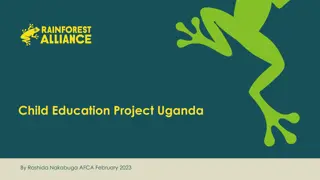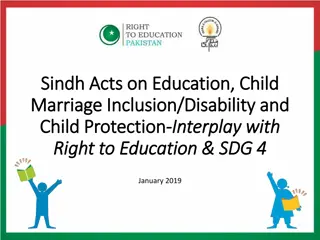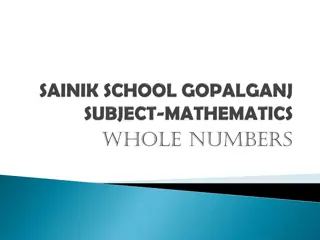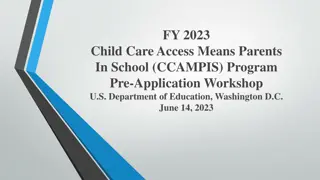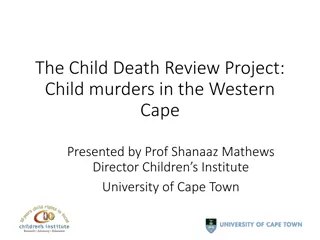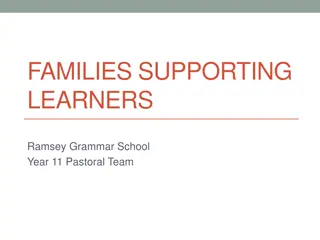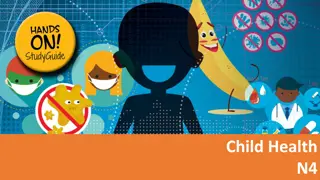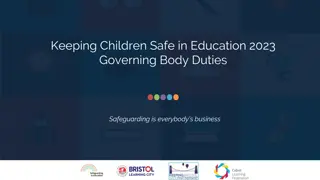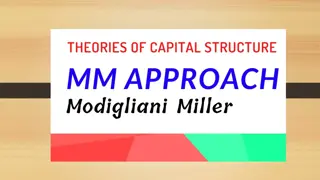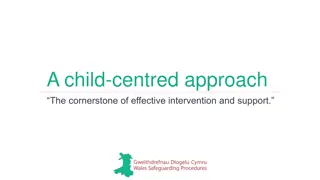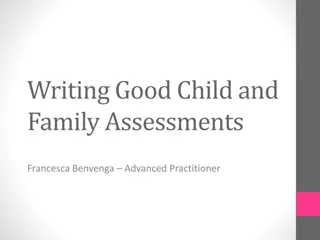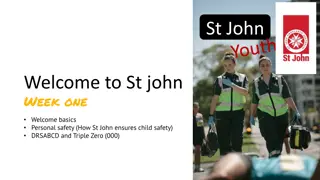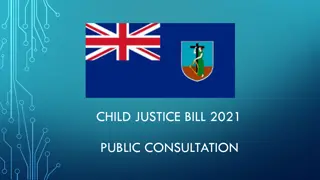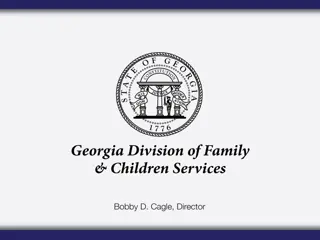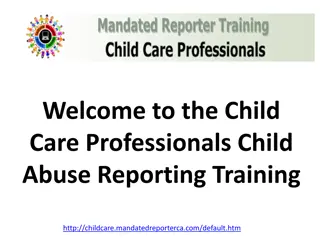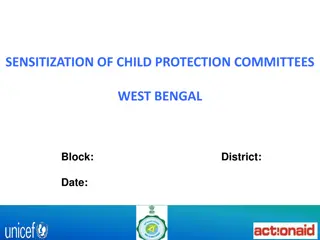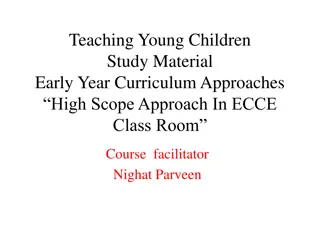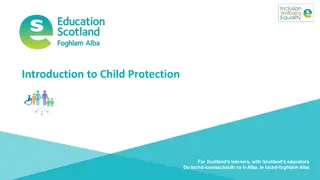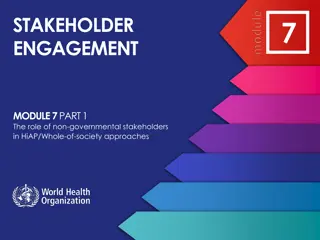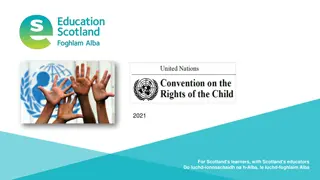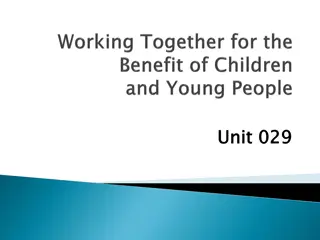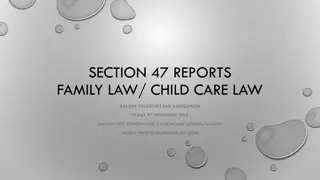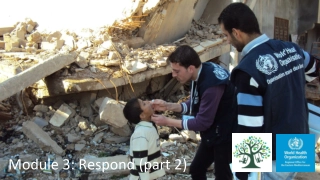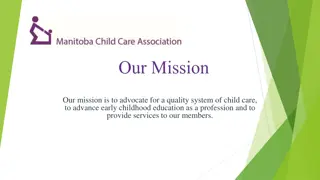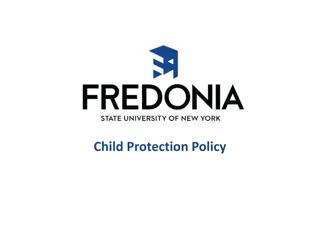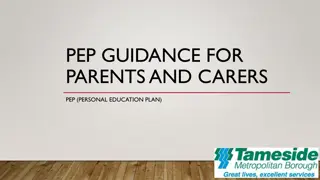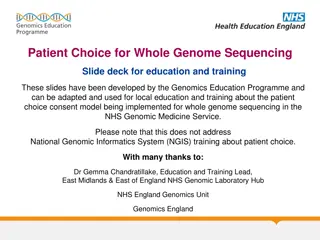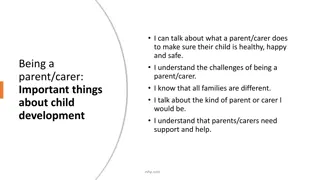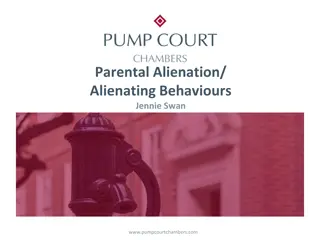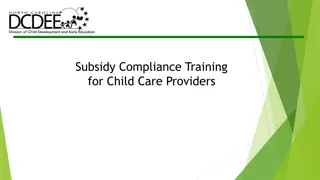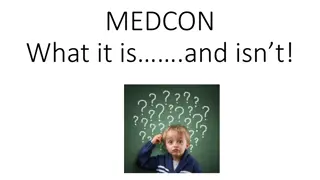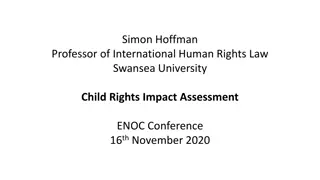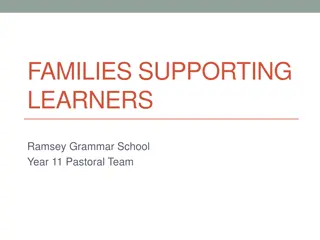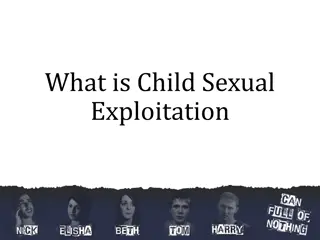Understanding the Whole-Child Approach in Education
The whole-child approach in education emphasizes viewing children as complete beings, considering all aspects of their development including physical, cognitive, social, emotional, and more. Neglecting one area can impact overall growth. This holistic view is essential for effective learning and teaching. Key modules explore different aspects of the whole-child approach, such as physical, cognitive, emotional development, learning theories, and factors influencing cognitive development. Additionally, the significance of education relationships and understanding how children learn and remember are highlighted.
Download Presentation

Please find below an Image/Link to download the presentation.
The content on the website is provided AS IS for your information and personal use only. It may not be sold, licensed, or shared on other websites without obtaining consent from the author. Download presentation by click this link. If you encounter any issues during the download, it is possible that the publisher has removed the file from their server.
E N D
Presentation Transcript
Education N4
Module 1: The whole-child approach THE WHOLE-CHILD APPROACH This is an approach of studying the child as a whole, as a total being. The child learns, experiences and develops as one being as a whole or as a totality. All the aspects are important and therefore all should be discussed and studied. If one part of the child s development is neglected, it will influence the other aspects of his development. www.futuremanagers.com
Module 1: The whole-child approach (continued) DIFFERENT ASPECTS OF THE WHOLE-CHILD APPROACH The following aspects should be developed to ensure that the child is a whole child, a total being: 1. Physical 5. Self-image 9. Creative 2. Cognitive 6. Social 10.Aesthetic 3. Language 7. Moral normative 11.Religious 4. Emotional 8. Sexual www.futuremanagers.com
Module 1: The whole-child approach (continued) EDUCATION RELATIONSHIP: MEANING AND DIFFERENT COMPONENTS Education can be seen as an act whereby one person places himself in a relationship with another person. Education can only take place within a certain relationship where certain elements are present, namely: Trust; Authority; and Knowing or understanding. www.futuremanagers.com
Module 2: Aspects of learning and memory INTRODUCTION It is important for a teacher to know how a person learns, memorises and remembers, because they are in a career where they educate and teach children. Memory is the process by which you store and retrieve information and is vital in learning. www.futuremanagers.com
Module 2: Aspects of learning and memory (continued) FACTORS THAT INFLUENCE COGNITIVE DEVELOPMENT Important factors which play a role in a child s cognitive development are: Heredity and genetic characteristics; and Environment: Physical environment; Culture and religion; Gender differences; and Intrinsic and extrinsic motivation. www.futuremanagers.com
Module 2: Aspects of learning and memory (continued) LEARNING THEORIES Learning is effective when it changes your behaviour and this becomes visible in new skills, insights and the understanding of concepts. There are three generally accepted learning perspectives, namely: Conditioning; Cognitive/insight learning; and Observational learning. www.futuremanagers.com
Module 2: Aspects of learning and memory (continued) LEARNING STYLES Children learn in different ways. What works for one child may not work for the other. Every child is different in his or her learning style. The learning style is a unique method a child chooses to process, evaluate, analyse and study all new and challenging study materials. www.futuremanagers.com
Module 2: Aspects of learning and memory (continued) MEMORY Memory is a complicated process and can be divided into three types: Sensory which involves any of the five senses (sight, sound, touch, taste, and smell); Short term which is the store-room for the information that a person has actively in mind; and Long term which holds memories over a lengthy period of time. www.futuremanagers.com
Module 3: Educational approach to children with special intellectual needs INTRODUCTION According to Howard Gardner, there are eight different intelligence types: Logical-mathematical intelligence; Interpersonal (social) intelligence; Linguistic intelligence; Intrapersonal intelligence; and Musical intelligence; Naturalist intelligence. Visual spatial intelligence; Bodily-kinaesthetic intelligence; www.futuremanagers.com
Module 3: Educational approach to children with special intellectual needs (continued) GIFTEDNESS Gifted people have an above-average intelligence, usually shown by an IQ score above 130, as well as some superior talent or skill. The person has therefore the natural potential to excel in a particular field. www.futuremanagers.com
Module 3: Educational approach to children with special intellectual needs (continued) INTELLECTUALLY DISABLED CHILDREN Intellectual disability (ID), or intellectual challenge, once called mental retardation, is characterised by below-average intelligence or mental ability and a lack of skills necessary for day-to-day living. People with intellectual disabilities can and do learn new skills, but they learn them more slowly. There are varying degrees of intellectual disability, from mild to profound. www.futuremanagers.com
Module 3: Educational approach to children with special intellectual needs (continued) POTENTIAL LEARNING PROBLEMS A learning problem is a hindrance preventing the normal acquisition of skills. A learning problem is something that disturbs the child s daily life and impedes his progress at school. A learning disability is a problem that affects how a person receives and processes information. www.futuremanagers.com
Module 3: Educational approach to children with special intellectual needs (continued) EDUCATIONAL DEPRIVATION An educational deprivation indicator measures resources for school available to 15-year-old children in their homes. Aspects related to whether a child could access a desk at which to study, a quiet place to work, a computer for schoolwork, educational software, an Internet connection, a dictionary and school textbooks are to be considered; educational deprivation is defined here as having less than four of the seven items listed. www.futuremanagers.com




